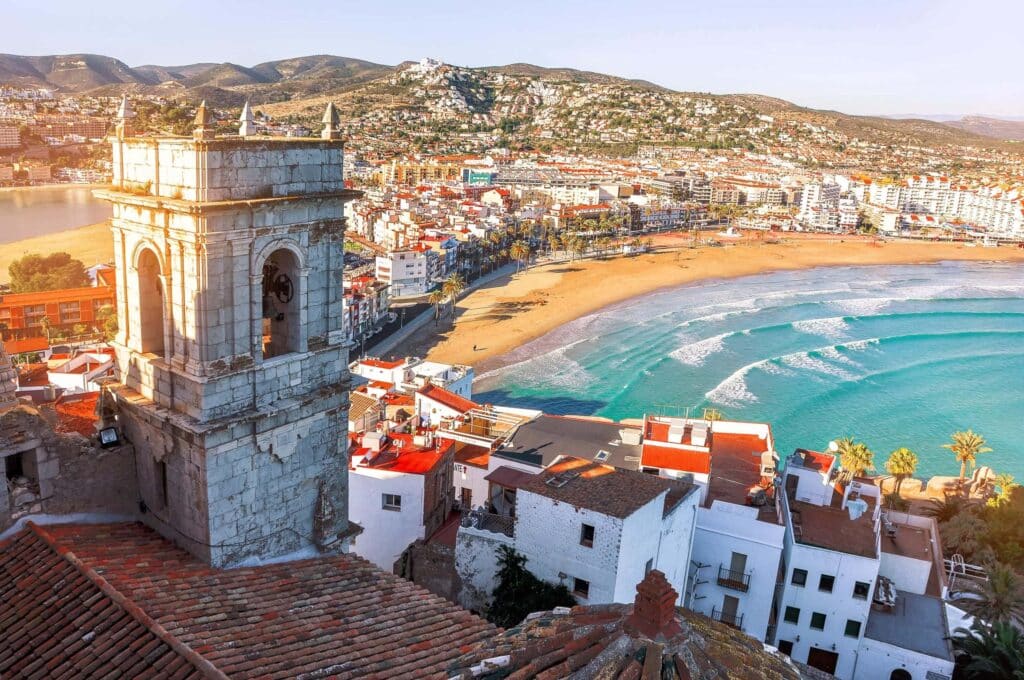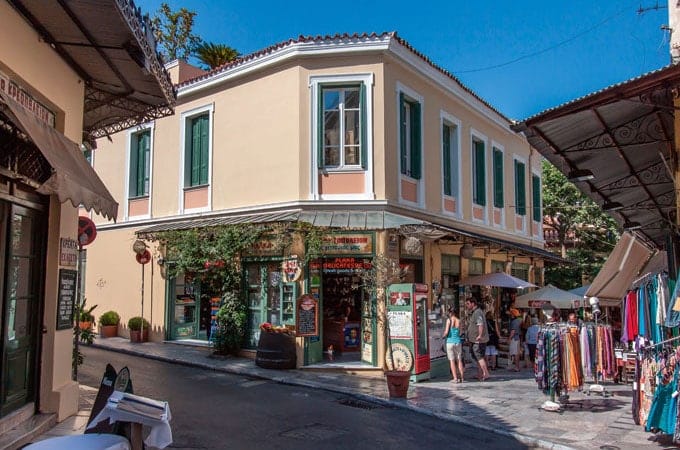Spain’s landscape is enriched by a beautiful mix of cultural influences shaped by various periods, including the Romans, Moors, and Catholic monarchs. Each era has left its mark through a collection of stunning landmarks.
Come along as we delve into Spain’s cultural treasures, exploring the fascinating stories woven into their architecture. This journey into Spain’s iconic landmarks will give you an insight into the country’s rich history, human ingenuity, and imagination as we uncover the intriguing stories etched into the very foundations of these historic sites.
La Sagrada Familia, Barcelona: Gaudi’s Unfinished Masterpiece
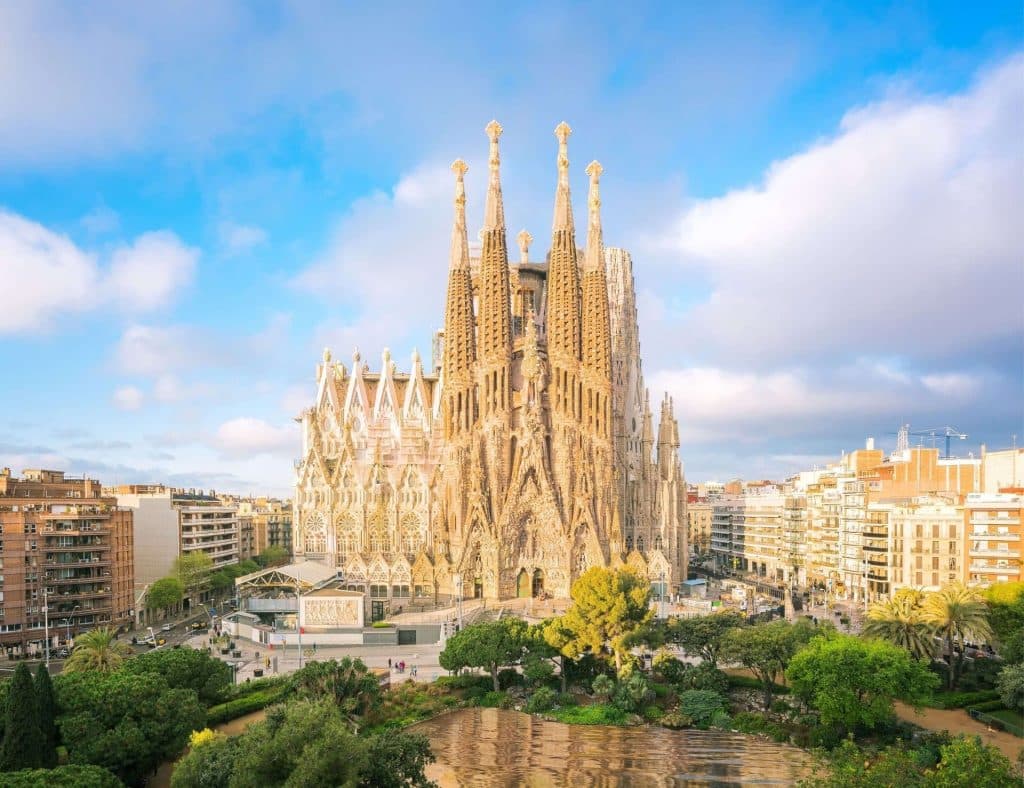
La Sagrada Familia is a magnificent basilica in Barcelona, a beautiful blend of Gothic and Art Nouveau architectural styles. Antoni Gaudi, the renowned architect, spent over 40 years building this grand structure, combining nature-inspired designs with religious symbolism.
The basilica has a unique character, and every facade depicts a different biblical story, adorned with intricate carvings that are a feast for the eyes. The arches are towering, and the columns are designed to look like forest trees, while the vibrant stained glass windows create a kaleidoscope of light inside the basilica.
Gaudi’s ambitious and impressive vision for the basilica has been in construction since 1882, with an expected completion date of 2026. This ongoing endeavour speaks volumes about human creativity, persistence, and devotion.
More than merely a symbol of Barcelona, the basilica is a masterpiece that showcases Gaudi’s genius and his distinctive influence on Spanish architecture. Visitors from around the globe flock to witness this evolving monument, marvelling at the grandeur of his design.
Related: 10 Things for Couples to Do & See in Barcelona
Gibralfaro Castle, Malaga
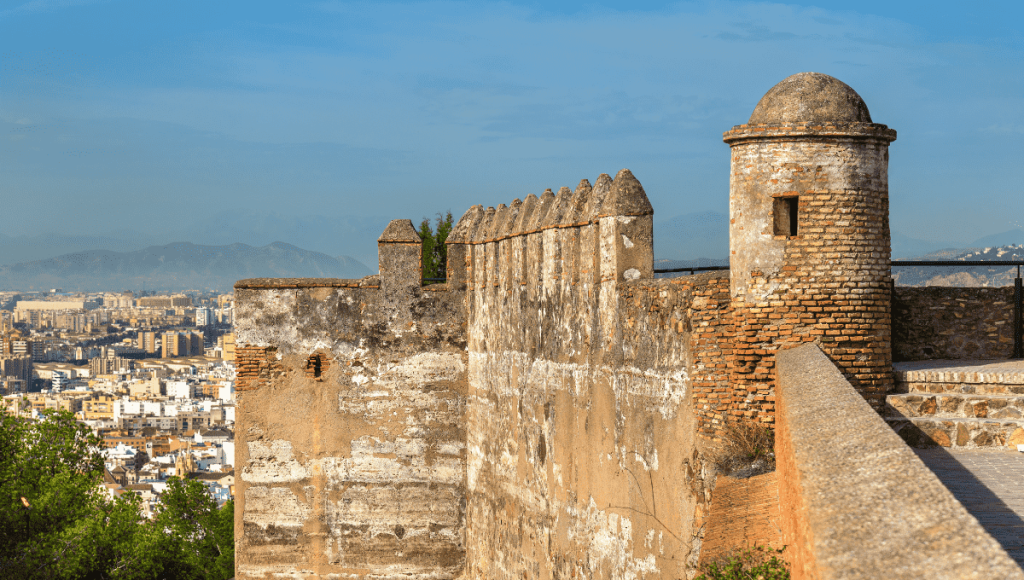
Perched atop Mount Gibralfaro, the castle bearing the same name stands as a silent guardian over Malaga. Constructed by the Moors in the 10th century, it is a potent reminder of the cultural blend that characterises Andalucia.
The fortress’s ramparts and battlements recount a time when Muslim civilisation thrived on the Iberian Peninsula, shaping the course of Spanish history. The castle’s sturdy walls, distinctive walkways, and sentry boxes exemplify the features of Moorish military architecture. Gibralfaro Castle functioned as a military stronghold and a lighthouse, guiding incoming ships safely to the port.
Today, tourists flock to this elevated vantage point to admire the breathtaking panorama of the city below and the azure waters of the Mediterranean stretching to the horizon. As visitors explore its grounds, the castle unveils layers of Spain’s past, providing a visual narrative that complements the region’s rich history. The castle is a firm reminder of a pivotal era in Spanish history.
Alhambra Palace: A Jewel of Andalucia
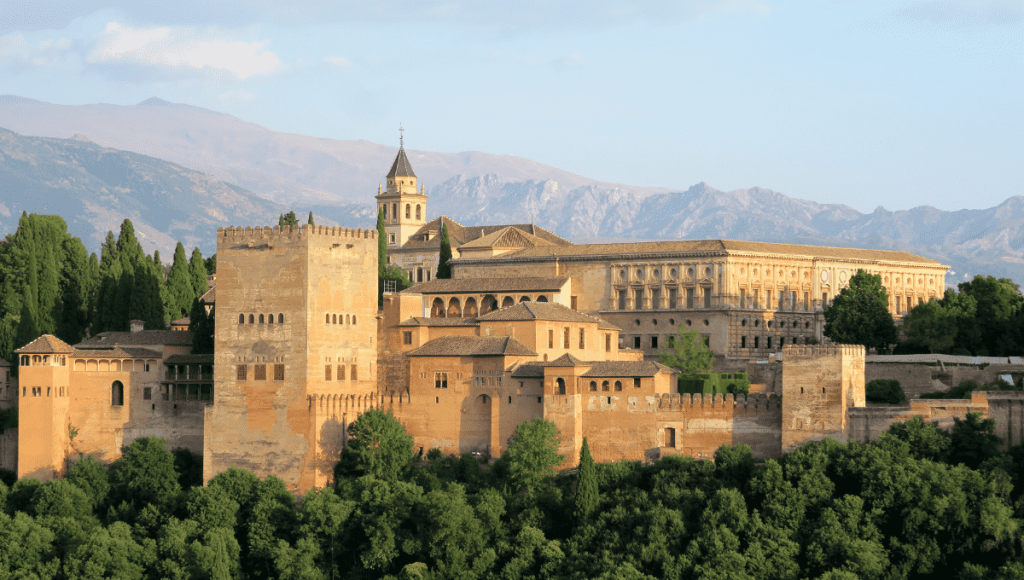
Nestled against the magnificent Sierra Nevada Mountains, the Alhambra Palace in Granada exemplifies the sophisticated Moorish culture and architectural brilliance. Its reddish-gold walls and intricate arabesque patterns grace the palace’s many courtyards and rooms, each recounting a chapter of Spain’s Islamic history. Reflective pools enhance the surreal beauty of the palace complex, blending seamlessly with the surrounding nature.
As twilight descends and the walls bask in the fading sunlight, this gem of Andalucia enchants visitors with a timeless allure. The Alhambra’s unique geographic and historical position highlights its enduring significance in Spain’s diverse cultural landscape.
The Avant-Garde Guggenheim Museum, Bilbao
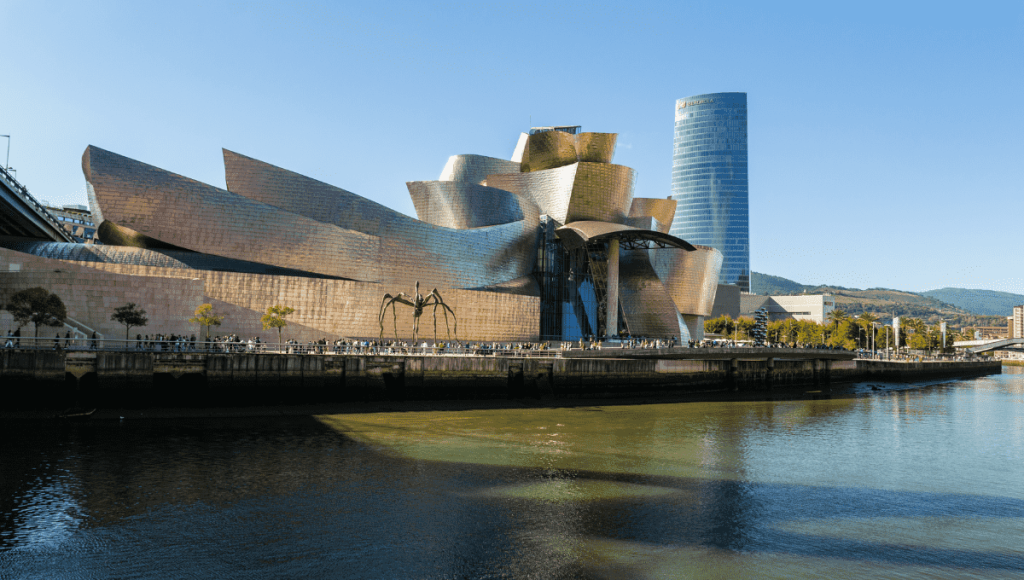
Designed by acclaimed architect Frank Gehry, the Guggenheim Museum Bilbao demonstrates Spain’s embrace of modernity and innovative design principles. This architectural marvel features undulating titanium forms that capture the light and imagination, making it an internationally recognized icon of contemporary architecture.
Inside, the museum hosts an array of modern and contemporary artworks, providing a dynamic space for visitors to engage with the latest creative expressions. Its collection and special exhibitions reflect a commitment to the forefront of artistic innovation. The Guggenheim Museum Bilbao celebrates the exceptional and serves as a beacon of cultural rejuvenation, symbolizing Bilbao’s successful transformation into a vibrant city of arts.
The Royal Palace: Discovering the opulence of Madrid

Madrid, the capital city of Spain, is home to one of the most lavishly appointed landmarks in the country – the Royal Palace. This magnificent palace, built in the 18th century, is a testament to the grandeur and elegance of the Spanish monarchy. As you enter its lavish interiors, you’ll be transported to a bygone era of kings and queens.
The Royal Palace boasts over 3,000 rooms, each more breathtaking than the last. Every inch of this architectural marvel is adorned with exquisite artwork and intricate detailing, from the grand staircase to the Hall of Columns. Take a stroll through the royal gardens, marvel at the stunning views of the city from the palace’s balconies, and immerse yourself in the magnificent history the Royal Palace has to offer.
Read More: A Couple’s Travel Guide to Spain
La Mezquita: Exploring the Islamic heritage in Cordoba

La Mezquita is located in the historic city of Cordoba; originally built as a mosque in the 8th century, it was later converted into a cathedral. This unique blend of Islamic and Christian architecture makes La Mezquita a mesmerizing and unique landmark you won’t want to miss.
Upon entering, you will be greeted by a breathtaking sight – a forest of over 850 columns, each adorned with intricate arches. The mihrab, a niche that indicates the direction of Mecca, is a masterpiece of Islamic art. The cathedral, built within the mosque, adds a touch of Christian influence to the overall design. You can also explore the labyrinthine streets of the old town surrounding La Mezquita and get lost in the charm and history of Cordoba.
The Prado Museum: Immerse yourself in Spanish art in Madrid
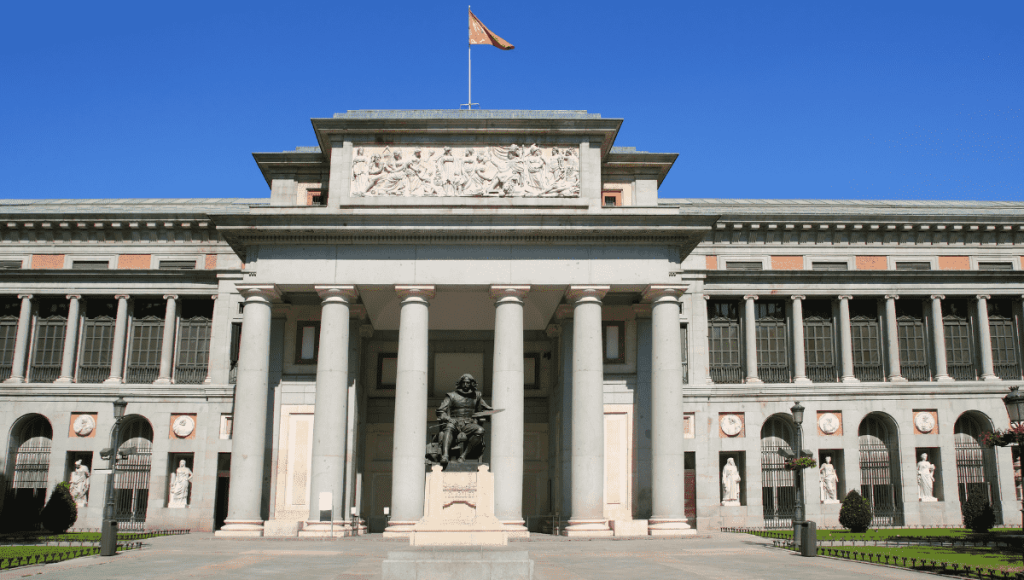
Art lovers will discover their haven in the Prado Museum in Madrid’s heart. This globally renowned museum boasts extensive Spanish art, showcasing masterpieces by Velázquez, Goya, and El Greco.
Immerse yourself in the works of these Spanish masters as you meander through the museum’s corridors. From Velázquez’s hauntingly beautiful “Las Meninas” to Goya’s dark and evocative “Saturn Devouring His Son,” each painting narrates a tale, offering a glimpse into Spain’s opulent artistic legacy. Be sure not to overlook the opportunity to marvel at the museum’s magnificent architecture and take a moment to unwind in its serene gardens.
The Alcazar of Toledo: Discovering the Medieval History of Toledo
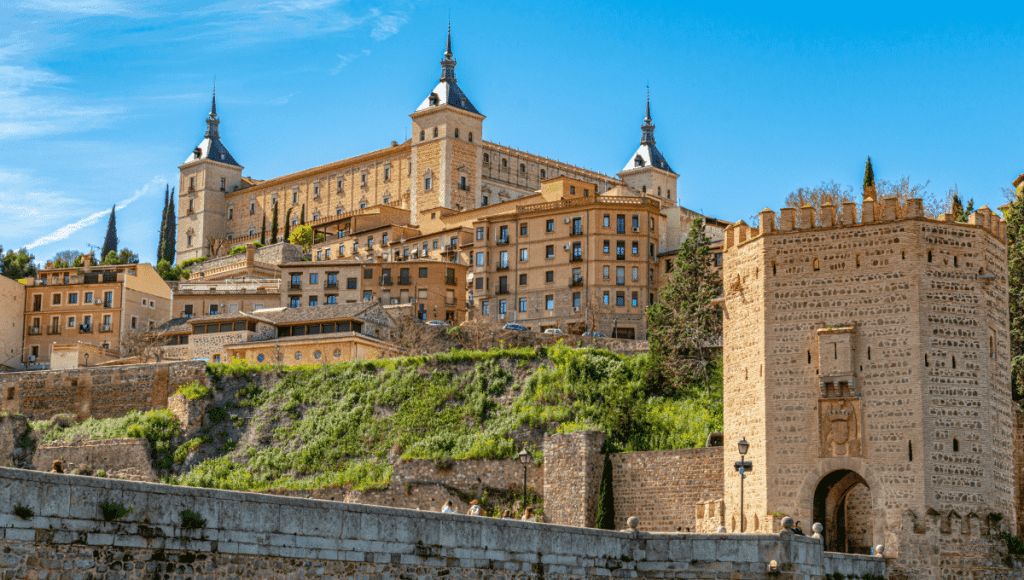
Take a step back in time and discover the rich history of Spain by visiting the Alcazar of Toledo, a medieval fortress located in the ancient city of Toledo. This impressive structure offers a glimpse into Spain’s military and political history during the Middle Ages.
Perched atop a hill, the Alcazar provides breathtaking views of the city and the surrounding countryside. Upon entering, visitors can explore its fortified walls, admire the intricate Mudejar architecture, and visit the military museum housed within its walls. If you’re on a day trip from Madrid, leave time to stroll through Toledo’s charming streets and discover the city’s rich cultural heritage.
The Roman Theatre of Merida: Uncovering ancient Roman heritage
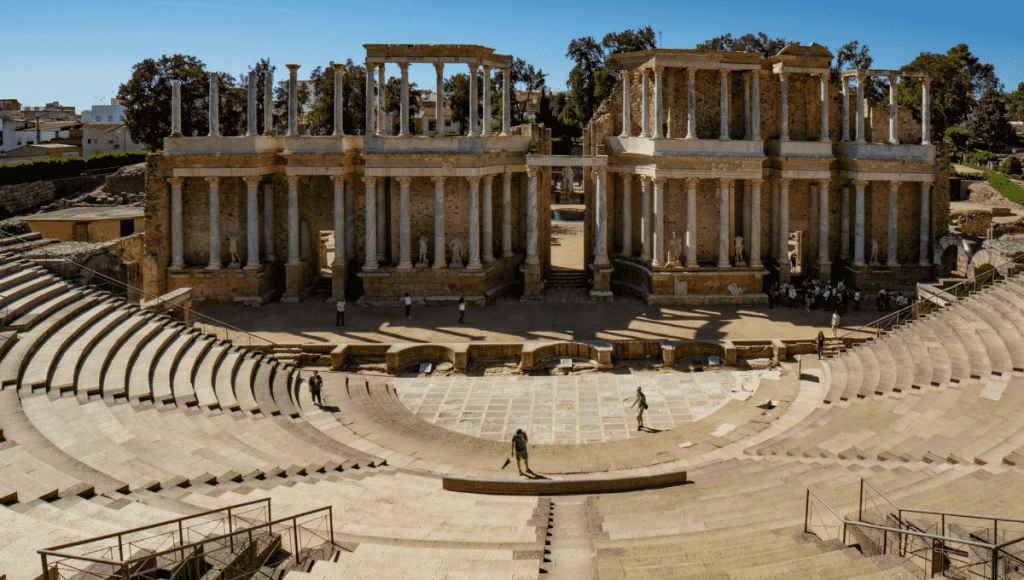
For history buffs interested in ancient civilisations, the Roman Theatre of Merida is an essential Spanish landmark to visit. This meticulously maintained amphitheatre provides a window into the grandeur and spectacle of Roman entertainment.
Step into the arena and imagine the gladiators and chariot races that once graced this venue. Appreciate the intricate carvings and sculptures adorning the theatre, which showcase the expertise and craftsmanship of the ancient Romans. Venture further into Merida, often referred to as “the Rome of Spain,” and uncover its numerous other Roman ruins, including an aqueduct and a bridge.
The Cathedral of Santiago de Compostela: A pilgrimage site of cultural significance
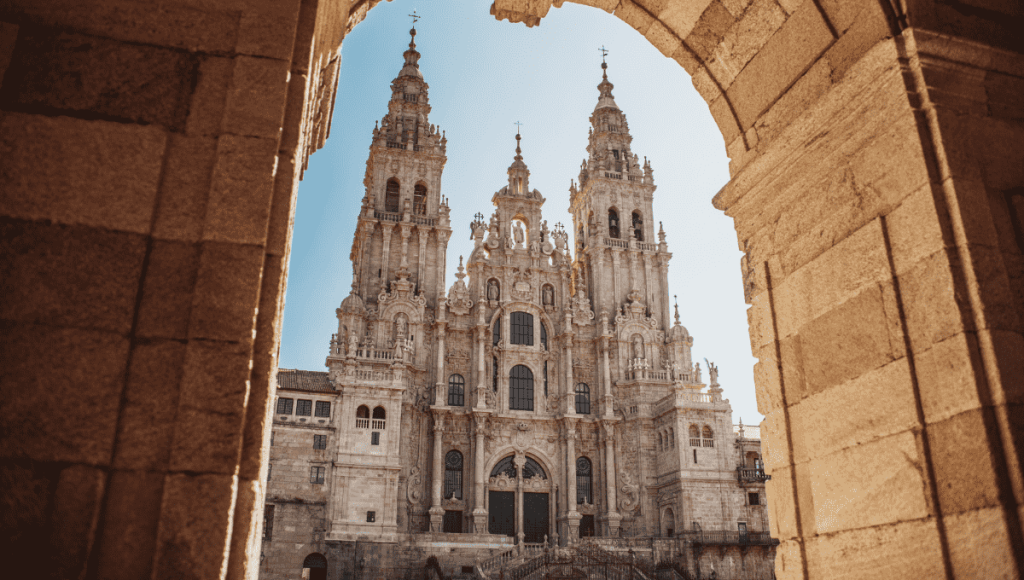
Visiting the Cathedral of Santiago de Compostela is a must to explore Spain’s historical landmarks fully. This magnificent cathedral is located in the city of Santiago de Compostela. It marks the endpoint of the famous Camino de Santiago pilgrimage, one of the most renowned pilgrimage routes in the world.
As you approach the cathedral, you’ll be greeted by a stunning façade adorned with intricate carvings and sculptures; marvel at the grandeur of the interior, including the famous Botafumeiro, a massive incense burner that swings through the nave during special occasions. Take a moment to reflect in the quiet corners of the cathedral and soak in the spiritual atmosphere that has drawn pilgrims for centuries.
Related: Walking The Spanish Camino – a Couple’s Real Story & Guide
The City of Arts and Sciences: Valencia’s Modern Marvel
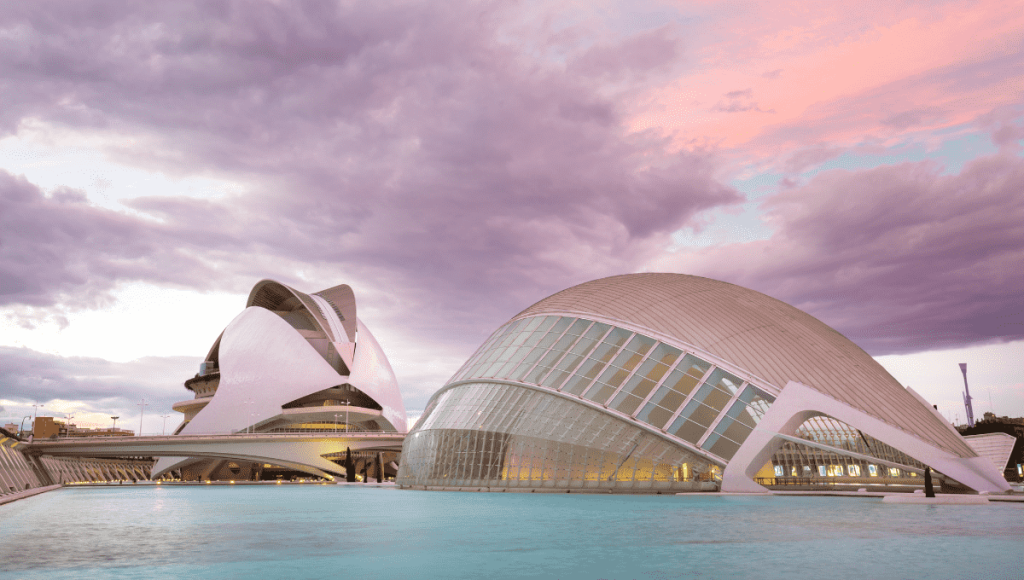
Valencia’s City of Arts and Sciences stands as a breathtaking homage to modernity, nestled in the sun-drenched expanses along the former Turia riverbed. This futuristic ensemble, conceived by the renowned architect Santiago Calatrava, consists of a series of visually striking structures. Each edifice within this complex serves a distinct purpose in the pursuit of knowledge and culture.
The Hemisfèric, with its eye-like design, houses an IMAX cinema that fascinates visitors with a vivid sensory experience.
Nearby, The Príncipe Felipe Science Museum beckons with interactive exhibits designed to engage and educate guests about science and technology.
The Oceanogràfic, the largest aquarium in Europe, takes you on a journey through the world’s main seas and oceans, revealing a rich tapestry of marine life.
Alongside these, one finds The Palau de les Arts Reina Sofia, a soaring temple of the performing arts, where operas and orchestral pieces resonate within its walls.
The complex also includes The Umbracle, a serene landscaped walkway and garden, and The Ágora, which provides a multifunctional event space.
The architectural innovation on display combines both form and function, exemplifying a harmony that captures the progressive spirit embodied by Valencia’s urban landscape. Situated amid the green stretches that replaced the Turia River, this cultural haven seamlessly integrates with the peaceful gardens, bridging the gap between Valencia’s rich past and its dynamic future.
Historical Splendour: Exploring the Roman Theatre in Cartagen
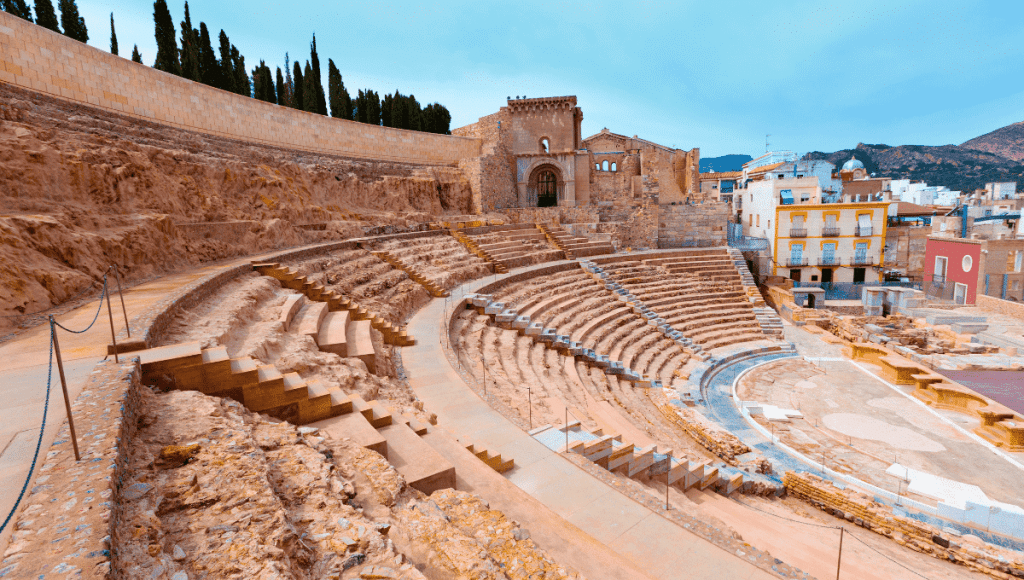
The Roman Theatre in Cartagena pays homage to the city’s ancient past, unveiled to the modern world in a fortuitous discovery during the 1980s. After lying hidden for centuries, urban development unexpectedly opened a window into history, revealing an amphitheatre once bustling with spectators of gladiatorial combats and dramatic performances.
Restorers worked meticulously to revive the grandeur of the Roman Theatre, employing modern techniques alongside traditional methods to preserve its integrity. Today, this historical site fascinates visitors with its resilient arches and stonework echoing the ingenuity of Roman engineering.
The theatre’s strategic urban location, nestled in the heart of Cartagena, enhances its allure, bridging the gap between past and present. It serves as a cultural landmark, offering invaluable insights into the societal norms and entertainment forms that characterised Roman Hispania.
The unexpected emergence of the theatre from beneath contemporary structures adds a layer of mystique to Cartagena’s rich history, providing an exciting revelation.
Unveiling History: Discovering Dalt Vila in Ibiza
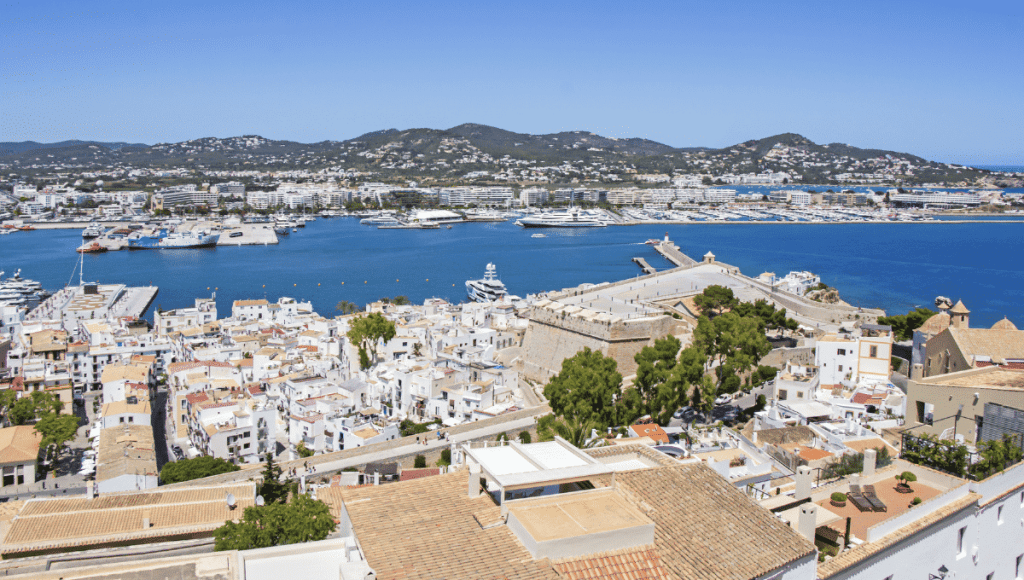
Perched atop a hill in Ibiza Town, Dalt Vila proudly stands as a symbol of the past and a UNESCO World Heritage site. This fortified acropolis bears witness to Ibiza’s history, with sturdy walls and battlements that attest to its strategic importance in the Mediterranean.
Within these protective boundaries, narrow cobblestone streets wind through a captivating array of Gothic and Renaissance buildings. Visitors are transported back in time as they navigate the labyrinthine paths, discovering hidden courtyards and chapels that exude an aura of medieval mystique.
From the summit, one can behold breathtaking panoramic views, encompassing the island’s coastline and the deep blue sea beyond. Here, modern-day Ibiza unfolds against the backdrop of centuries past.
Dalt Vila is more than a historical landmark; it represents a layered narrative of the diverse cultures and civilizations that have shaped the island’s unique character, offering a fascinating juxtaposition between the old and the new.
The Mystique of the Holy Grail in Valencia’s Cathedral
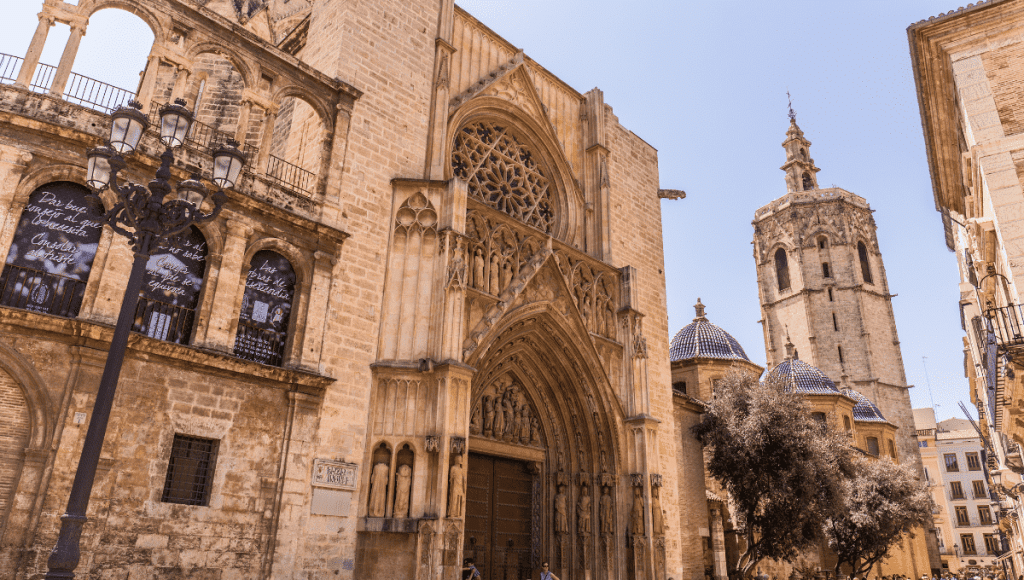
Within the hallowed walls of Valencia’s Cathedral lies a cup of oriental agate stone, adorned with precious jewels. This revered relic, known as the Holy Grail, has long captured the imagination of scholars and faithful alike.
Legends assert that this very chalice was used by Jesus during the Last Supper, imbuing it with profound significance. Consequently, droves of pilgrims and curious visitors flock to the cathedral, eager to behold an artifact steeped in biblical lore.
The cathedral’s historical significance is thus enhanced by its association with the Grail, elevating it to a centre of religious tourism. Valencia has embraced this mythic piece of its heritage, enriching its cultural fabric and serving as evidence of its storied past.
Regal Majesty: Seville’s Royal Alcazar
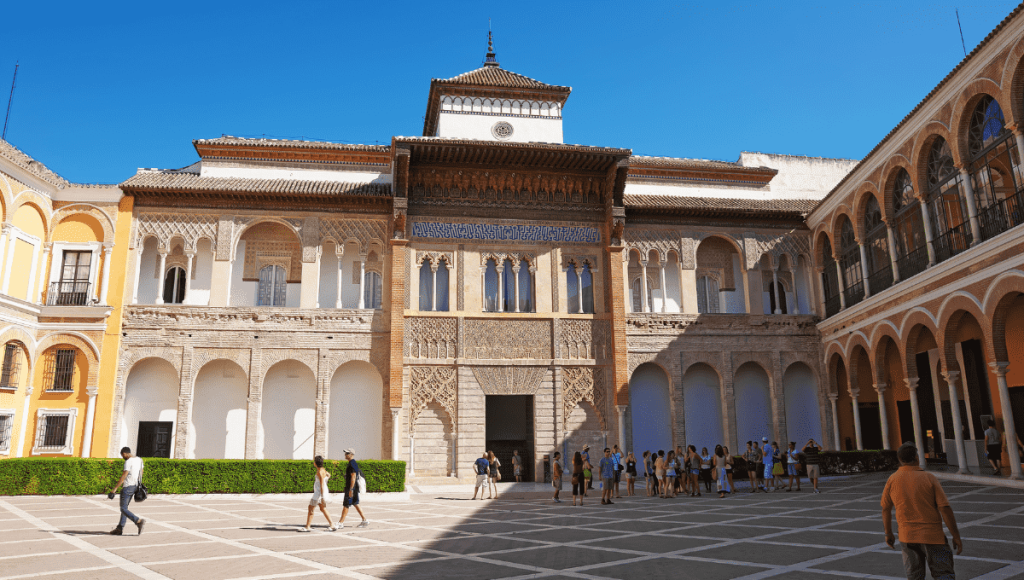
The Royal Alcazar of Seville epitomises the Mudejar style, a fusion of Christian and Islamic design that thrived following the Reconquista. This palatial compound charms visitors with its ornate mosaics and extensive sunken gardens, providing a tranquil retreat.
The palace complex preserves a rich array of geometric patterns and arabesques within its walls, captivating the eye and showcasing the artistic exchange between cultures. Once used by monarchs as a residence, it highlights the blend of power and grace inherent in the Mudejar aesthetic.
Its ongoing utilisation today, including as a filming location for respected productions, underscores the enduring architectural significance of the Royal Alcazar in Spain’s history.
La Seu Cathedral of Palma
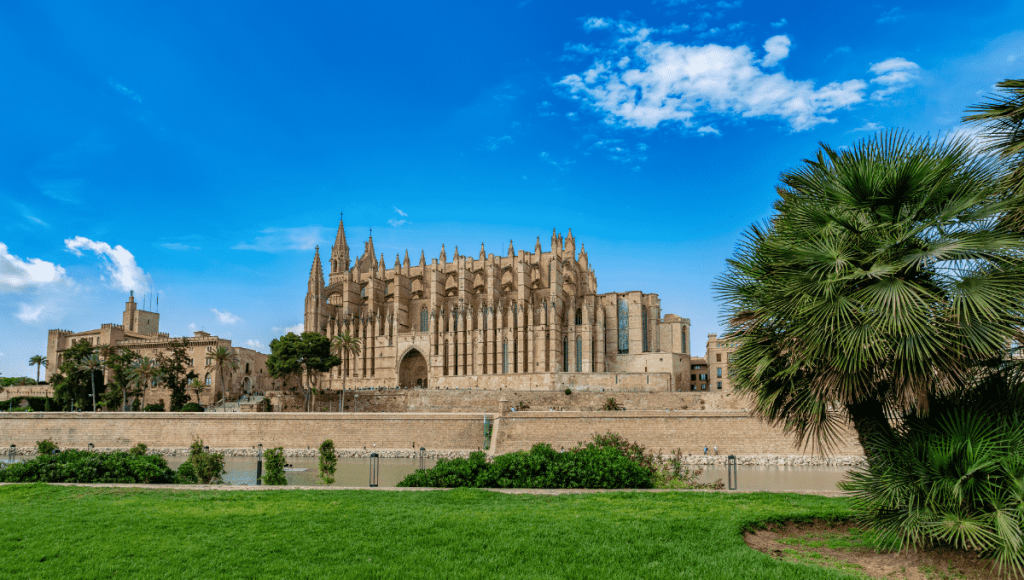
Situated in the heart of Palma city, the magnificent 14th-century cathedral known as La Seu is a must-see landmark in Mallorca‘s capital. Crafted from golden sandstone, its imposing presence towers above Parc de la Mar, offering a striking view to those arriving by sea.
The cathedral of Palma occupies the former site of a mosque from the Moorish occupation of Mallorca, positioned opposite the Royal Palace of La Almudaina. Its history dates back to Jaume I’s perilous journey to the island, where he pledged to construct a monumental cathedral upon liberating Mallorca from Moorish control. As such, La Seu symbolises his triumphant conquest.
Stepping inside, visitors are greeted by the awe-inspiring spectacle known as the ‘Cathedral of Light.’ Illuminated by 61 stained-glass windows, the central rose window casts vibrant hues of sunlight throughout the interior space. Despite its slender load-bearing pillars, the cathedral’s stability is ensured by ornate external buttresses, although a notable earthquake in 1851 caused significant damage to its western wall.
An annual highlight is the Festival of Light, a celebration that transforms La Seu into a radiant spectacle of illumination.
The Tower of Hercules
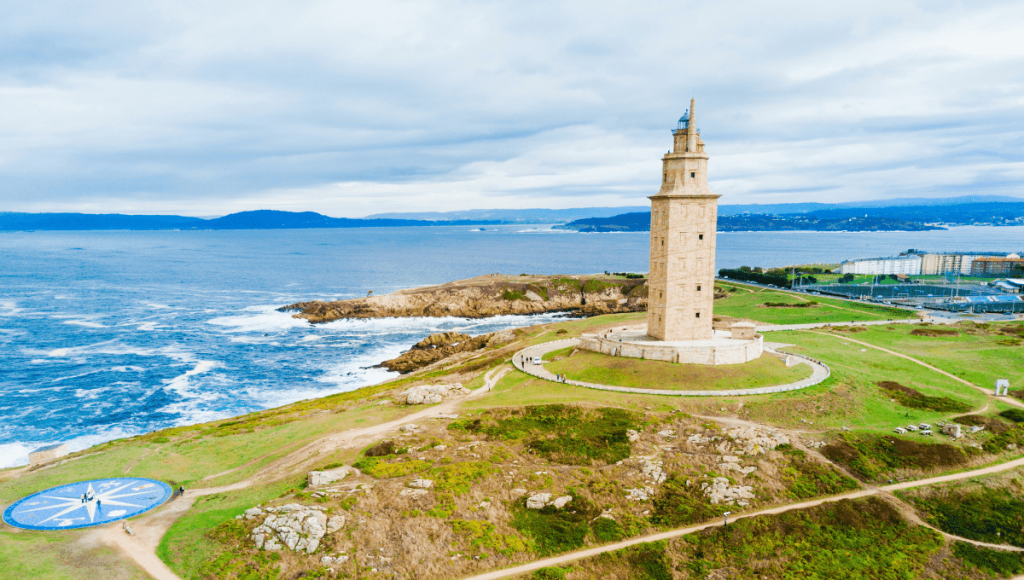
Standing majestically on the rugged coastline of La Coruña, the Tower of Hercules reigns as the oldest Roman lighthouse, still guiding ships with its beacon.
Overlooking the North Atlantic Ocean, this enduring structure dates back to the 1st century AD and proudly serves as a functional maritime signal and a cherished national monument of Spain.
Climbing to its peak rewards visitors with sweeping vistas, where the interplay of land and sea unfolds beneath an ever-changing sky. The tower’s historical significance and continued use make it an extraordinary fusion of ancient ingenuity and ceaseless duty.
The Enduring Impressions of Spain
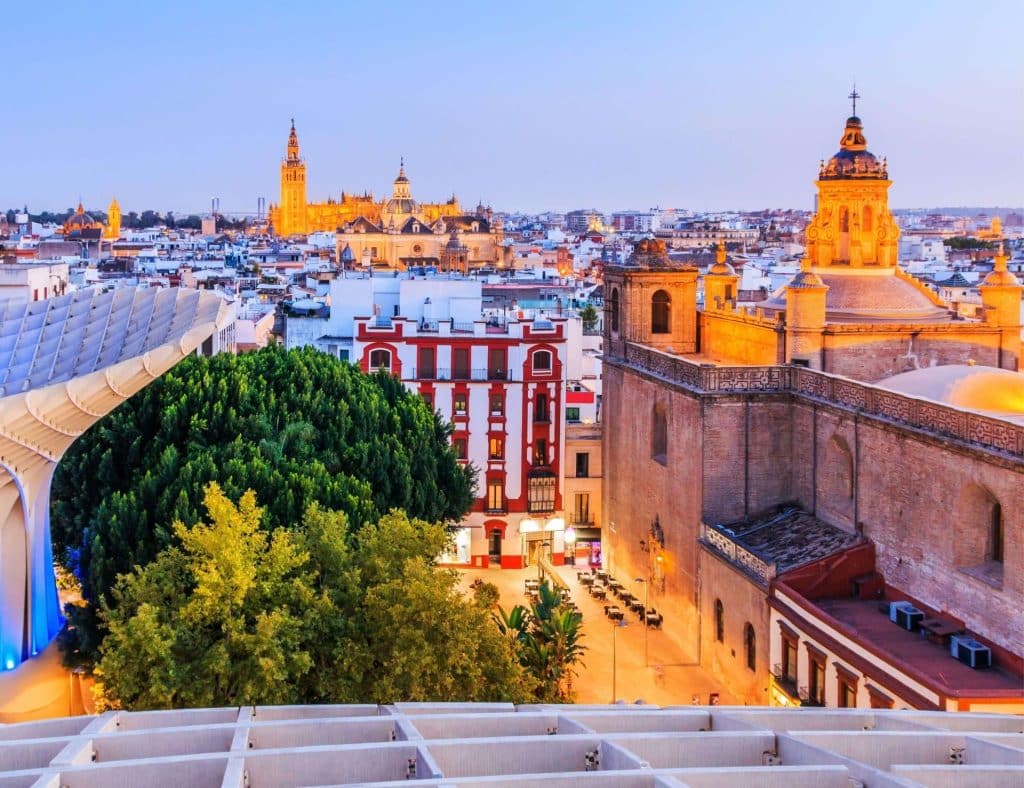
Spain’s landmarks form a rich mosaic of history and culture, each with a unique story. They contribute to the experience of every traveller exploring vibrant Spain. From the towering spires of La Sagrada Familia to the ancient splendour of the Roman Theater in Cartagena, these monuments transcend time, offering insights into Spain’s past empires, artistic legacy, and religious devotion. They are essential destinations for anyone seeking to appreciate Spain’s resilience and inventiveness, enriching the experiences of both visitors and locals.
Read more with our guide to Italy’s top landmarks // Related: How to See the Best of Spain by Train
